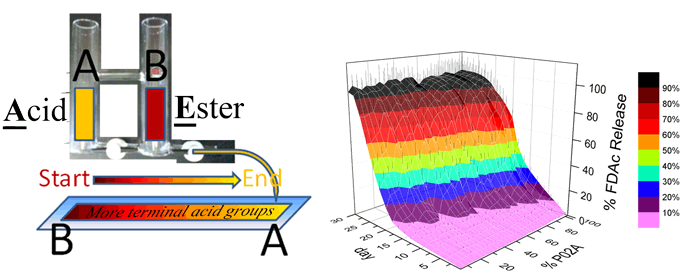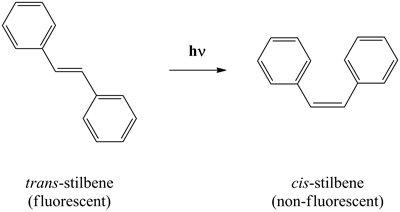Past Research Projects
On-demand, event activated soft-tissue bioadhesives |
|---|
| Current methods of tissue fixation leave much to be desired, essentially relying on technologies developed from the clothing and carpentry industries i.e. sutures, screws, and pins. Bioadhesives offer a less traumatizing method of tissue fixation and hence are a needed tool in the clinic. Our group is researching novel bioadhesive strategies that allows application in wet environments, and an on-demand adhesive mechanism. On-demand adhesion would allow flexibility in method placement and take advantage of less invasive surgical technologies, for example balloon catheters and laparoscopic (keyhole) surgeries. |
 |
| By employing carbene-based surface chemistry, on-demand adhesion may be possible in wet environments that would normally foul most other adhesion mechanisms. |
Tuning thin film drug delivery through gradients and light-activation |
|---|
| Current implanted drug delivery devices have a fixed delivery profile—no modulation is possible once implanted—this includes osmotic pumps, chemically controlled systems (biodegradable), and diffusional polymer matrices. Ideally, one would like to tailor drug delivery based on biological feedback and therapeutic index. We are currently developing photo-responsive drug delivery systems that have the following inherent qualities: 1) zero order release, 2) NIR light activation, 3) clean photolysis with no toxic degradation products, and 4) precise external excitation that allows feedback. |
 |
| By tuning the ratios of acid and ester terminal end-groups, degradation of polyester thin films and subsequent drug release can be tightly controlled. Photochemical nanotechnology within the polyester matrix may allow drug release though light-based mechanisms. |
Photochrome-aptamer switch assay (PHASA) |
|---|
| Our collaboration (with CREATE) is currently developing a biosensing device that allows detection and quantification of analytes within minutes. The biosensing device is designed to remove laborious purification and washing protocols that limit some bioassays to several hours of incubation, for example ELISA detection of analytes. Our method of analyte detection relies on a novel stilbene technology that theoretically allows limitless ligand selectivity and high sensitivity in a small portable instrument without the use of chemical reagents or consumables. |
 |
| A unique feature of stilbenes is their reporting power via an instant conformational change upon irradiation with the excitation light. This makes the stilbene switches unique in the sense that most fluorescent reporters (labels or probes) either do not possess this intramolecular switchable nature or require the separation of adjacent fluorophores. |
